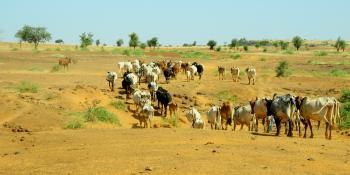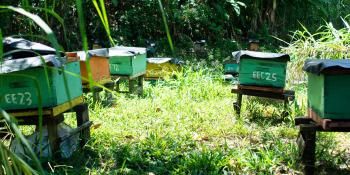'Akoro' no more: cassava multiplication techniques help Ugandan farmers achieve a food secure future
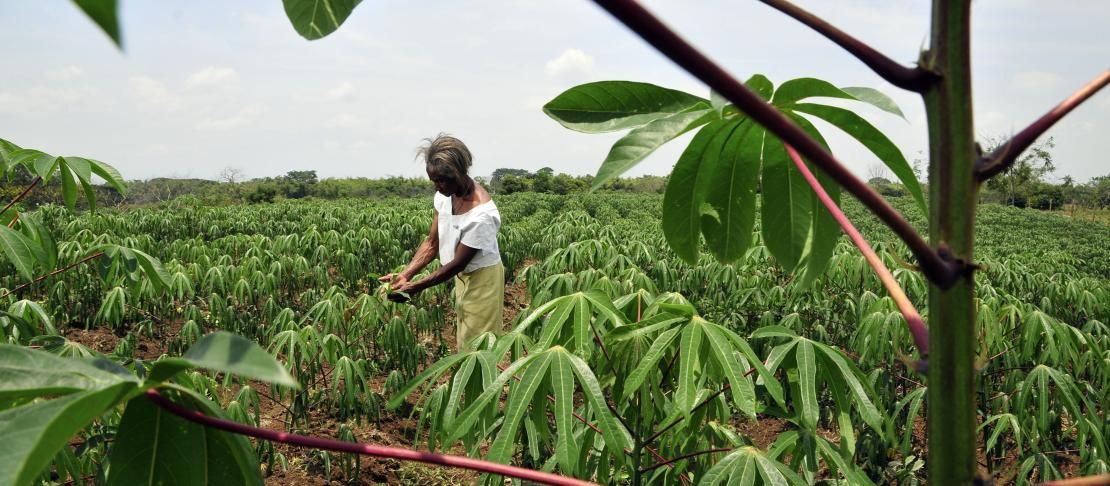
In Napak district in Uganda, farmers are facing a more food secure tomorrow thanks to cassava multiplication techniques.
Roasted cassava is very popular in the Orungo trading center for travelers. If you don't buy it there and then, you will hard pushed to find anything else on your way to Karamoja in Uganda! In fact, as you enter Iriiri trading centre of Napak district, you will probably not find anything but cassava to eat.
This story also our winner from the CCAFS open blog competition for the East Africa region.
Cuthbert Aongat is making a difference to food and farming in his community via his newly created organisation 'Community focus Uganda', focusing on food and agriculture development (among other things). He is also working at Action Against Hunger as an assistant food security and livelihoods coordinator while developing his skills as a news journalist, highlighting stories like this one, online.
As you travel down to Napak district you might also find yourself hating everything, asking yourself why you chose to travel to such a hard to reach place. By then you have spent a minimum of 2-3 days traveling before entering Moroto town, on roads that are poorly constructed, muddy and slippery... waooo!
When you greet the locals, the common response is “Akoro” which means hunger, because that is what the region is known for, despite the many interventions attempted by humanitarian and development actors!
Cassava, the crop the Karimojong once referred to as “eloma bon” (grows alone) has brought hope to end hunger in some parts of the region.
This story showcases a few of the successful farmers that have been supported by a few NGOs in promoting cassava growing.
A turn of events: from raiding to farming
Rajab Angolere of Kokipurat village, about 9km from Lorengechora trading center tells his story on how cassava growing has transformed his life and secured food for his family of 12 throughout the year. He confessed himself as former drunkard and cattle rustler who abandoned raiding and drinking for farming.
He took up cassava multiplication in 2011-2012 when NGOs introduced cassava growing as one important food security crop for the region.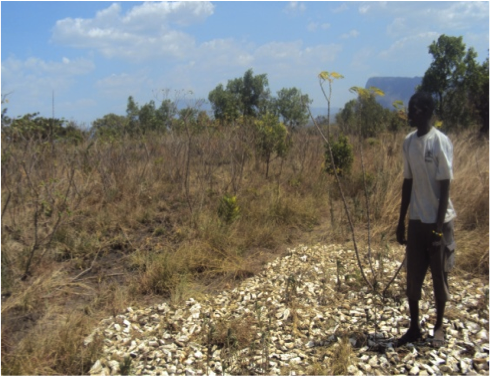
“At this time, many households couldn’t see the value in this venture; before I took this venture, hunger was looming and my family suffered equally with the rest of the community."
In the photo: Angolere showing his garden of cassava.
His family used to either migrate to the neighbouring Teso in search for food or rely on borrowing. In desparate times he would go raiding in order to meet a day’s meal; food aid was never enough because his family was growing in size.
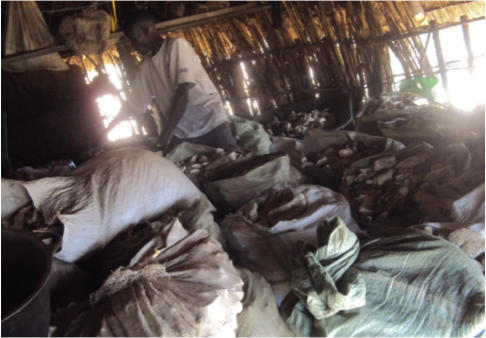 When he received 10 bags of cassava cuttings in 2011, he planted one and half acres. He later cut the stems and replanted in five acres of land. This made his production multiply with additional planting material distributed in 2012. In 2013 he was able to plant 10 acres of cassava after multiplying cuttings.
When he received 10 bags of cassava cuttings in 2011, he planted one and half acres. He later cut the stems and replanted in five acres of land. This made his production multiply with additional planting material distributed in 2012. In 2013 he was able to plant 10 acres of cassava after multiplying cuttings.
In the photo: Angolere in his cassava store.
This year 2014, Rajab has been able to harvest six metric tones of cassava from his own gardens with more than another 5 Metric tons still remaining in his garden. In October 2013, Rajab sold 40 bags of cassava cuttings. He invested that money in further cultivation, paid school fees for his children and solved other immediate household issues. He now supplies dry and fresh cassava to Lorengechora Market and to Moroto town.
What is rapid cassava multiplication? Learn more about the technique via this video
Farmer turned bee-keeper
Understanding the long term effects of hunger, Angolere consolidated cassava growing with bee keeping as an alternative income generating activity for his household. Rajab established 20 bee hives and now owns an apiary project.
He is optimistic that bee keeping will earn him a better  income because there is a high potential in his community to produce sweet and delicious honey.
income because there is a high potential in his community to produce sweet and delicious honey.
In the photo: Beehive construction site
“I am an active farmer now in my village; people come to learn and actively participate; when they come, I ask them to support me to cultivate more crops and in return I give them some food,” Rajab explained.
Cassava pays for school in Tepeth
In Iriiri Sub County-Losikait Village in Tepeth parish, about 3km from Iriiri trading centre, another successful farmer of 7 children took me to her home to witness the 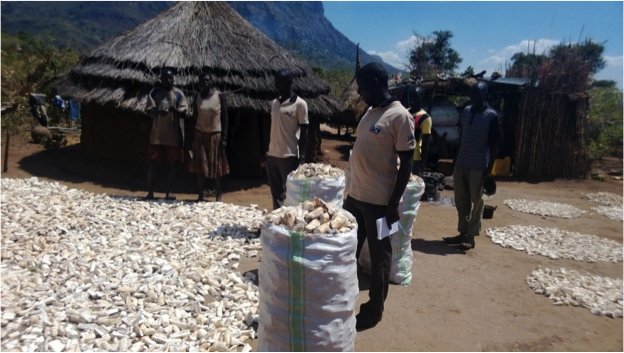 harvest she is getting from growing cassava.
harvest she is getting from growing cassava.
Mrs. Adungo Paul explained that they have so far harvested 6 tonnes of cassava which their family is going to sell for tuition fees for their children.
In the photo: Farmer Adungo Paul shows harvested cassava
When asked if they have enough to consume at household level, she said:
“Additional 4 acres of cassava are yet to be harvested and these will cater for this entire hunger gap until the next season. Besides we have three acres currently planted and will be ready for consumption by September 2014.”
She added that part of the cassava being harvested will be stored for home consumption while the other will be sold in the market.
Mrs. Adungo explained that with the current harvest and the hard work that their family is putting in, food aid is no longer their priority, the family can now afford food when they need it. Their main concern is how to earn more income to support their household and pay tuition fees for their children.

In the photo: Mrs. Adungo (in middle) with some of her family members standing by the stacked cassava bags in her home.
Disclaimer: This story does not reflect the views of the CGIAR Research Program on Climate Change, Agriculture and Food Security (CCAFS)
Read all the winning stories from CCAFS open blog competition
Learn more about Cuthbert Aongat's newly created community-based organisation by liking them on Facebook or visit their web site: Community focus Uganda.


